
01 Sep What is hijama in islam, is hijama sunnah? Unveiling Cupping Therapy in islam & Its Sunnah Status
As a core practice of cupping in Islam, this Sunnah Hijama therapy is a therapeutic process deeply encouraged by Prophet Muhammad (PBUH) for its many benefits of Hijama in Islam and significant advantages of Hijama therapy.
Indeed, Hijama is Sunnah, with hijama cupping body treatment considered the best remedy recommended by the Messenger (PBUH).
For those wondering if is Hijama Sunnah, its foundational place in Hijama Islam and specific guidance on hijama days sunnah or sunnah days for Hijama are clear.
When seeking this blessed cupping therapy Sunnah, consult a qualified hijama specialist who offers sunnah cupping therapy for male & female to ensure adherence to this authentic tradition.
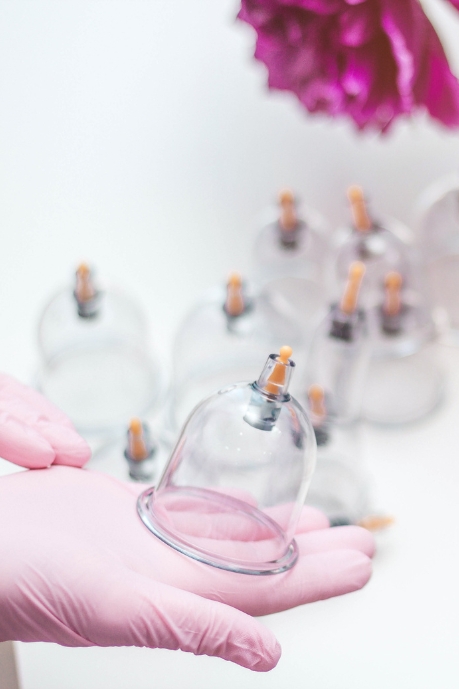
Amidst the rise of holistic health, Hijama cupping body treatment stands out as a prominent traditional remedy, notably for its profound Islamic significance.
This comprehensive guide will delve into the essence of Hijama in Islam, exploring its definition, types, and how it traditionally and scientifically works.
We will uncover its rich history, discuss the myriad physical, mental, and spiritual benefits of hijama in islam and what it offers, walk you through the Hijama procedure, and provide crucial information on safety, precautions, and common misconceptions.
By the end, you’ll have a thorough understanding of Hijama in Islam – this timeless healing practice – and its place in your holistic wellness journey.
The Essence of Hijama in islam: Definition, Types, and Mechanics
To truly appreciate Hijama, it’s essential to understand its foundational principles and variations.
What Exactly is Hijama in Islam?
At its core, Hijama is a therapeutic process involving the application of cups to the skin to create suction. The Arabic word “Hijama” is derived from “hajm,” which means “to suck” or “to draw out.”
The word hijama was derived from the Arabic verbs “hajama” and “haj’jamah” which means to minimize or to restore to basic size, or to diminish in volume or to pull out.
In Arabic they say, a certain person diminished the problem, they meant that he returned the problem to its original size.
Thus, he who performed the cupping operation made diseases refrain from attacking him.”
This suction is believed to draw stagnant blood, toxins, or pathogens to the surface, facilitating their removal or redistribution for healing.
It’s a practice with roots in various ancient civilizations, but Hijama in Islam holds a unique and revered status in Islamic medicine.
Types of Hijama Cupping Therapy in Islam
Within the practice of Hijama in Islam, several distinct techniques are employed, each serving a specific therapeutic purpose:
| Type of Cupping | Description | Primary Uses/Purposes | Special Notes |
|---|---|---|---|
| Dry Cupping (Hijama Jaffa) | Cups are placed on the skin, and suction is created using a pump or by heating the air inside. No skin incisions are made. | Muscle relaxation, pain relief, improved blood flow, easing tension. Common for musculoskeletal pain, headaches, and relaxation. | Most common form of cupping. Skin remains unbroken. |
| Wet Cupping (Hijama Ratba) | Involves light skin incisions after dry cupping. Cups are re-applied to draw out stagnant blood or interstitial fluid. | Traditionally believed to purify the blood, remove “toxins,” and address blood stagnation-related conditions. | Must be performed by trained, certified professionals in sterile conditions to prevent infection. |
| Massage Cupping (Hijama Tadleek) | Oil is applied to the skin; cups are moved across the skin in a gliding motion to create a massage effect. | Deep tissue massage, muscle knot release, improved circulation, and reduction of cellulite. | Less intense, often used for relaxation and soft tissue therapy. |

How Does Hijama Work (Traditional & Modern Perspectives)?
The mechanism of Hijama in Islam is understood through both traditional Islamic wisdom and emerging modern scientific interpretations:
Traditional Islamic View: From a traditional perspective, Hijama in Islam works by purifying the body and restoring balance.
Unblocking Energy Pathways: Similar to concepts in traditional Chinese medicine, it’s believed to clear blockages in the body’s energy channels, allowing for better flow and circulation.
Purifying Blood & Removing Stagnant Waste:
The increase of spoiled blood (the old red blood cells, R.B. cell ghost) in the body renders its cessation from growing when the person becomes twenty-two years old and is accumulated in the back area of the person.
With the advance in age, these accumulations of spoiled blood hinder the circulation of the whole blood, eventually paralyzing the work of the young red corpuscles, then the body becomes weak and exposed to various kinds of diseases.
When one performs Hijama cupping body treatment, the blood returns to its original condition and the stagnant blood goes away (that blood which contained maximum rate of senile red corpuscles and their cells ghosts and abnormal shapes of red blood cells, and other impurities).
The pressure on the blood circulation is lessened, and the pure blood formed from young red corpuscles rushes to feed the cells and the body organs, releasing them from harmful residues, damages, and unwanted materials.
Cupping and hijama Therapy also effectively gets rid of acidic toxic waste that accumulates in our bodies (blood stasis) as we grow older.
Sources of Toxic Waste: These toxins can stem from various sources, including:
- The polluted air we breathe
- Toxic chemicals found in food, water, drinks, household chemicals & toiletries
- Environmental waste in your neighborhood
- Intoxicating drinks, narcotic drugs, junk food, and smoking
- Waste products of normal body metabolism
- Products of medicinal drugs metabolism
- Impact of trauma and accidents on our body
- Toxins from mental stress, anger, anxiety, and depression.
Balancing Bodily Humors: In older medical philosophies, it was believed to help balance essential bodily fluids or humors, restoring equilibrium.
Unblocking Energy Pathways: Similar to concepts in traditional Chinese medicine, it’s believed to clear blockages in the body’s energy channels, allowing for better flow and circulation.
Purifying Blood: Especially wet cupping, it is seen as a way to remove “stagnant” or “toxinated” blood, thereby cleansing the system.
Balancing Bodily Humors: It help balance the essential bodily fluids or humors, restoring equilibrium.
Modern Interpretations: While more research is ongoing, modern science suggests several physiological effects that may contribute to the advantages of hijama therapy:
Increased Localized Blood Circulation: The suction draws blood to the area, potentially improving nutrient and oxygen delivery and facilitating waste removal.
Release of Muscle Tension: The vacuum effect can lift and separate soft tissues, easing muscle stiffness and promoting relaxation.
Anti-inflammatory Effects: By stimulating local circulation and potentially influencing the immune response, Hijama may help reduce inflammation.
Stimulation of Immune Response: The minor trauma induced by cupping might trigger a localized immune response, potentially aiding in healing processes.
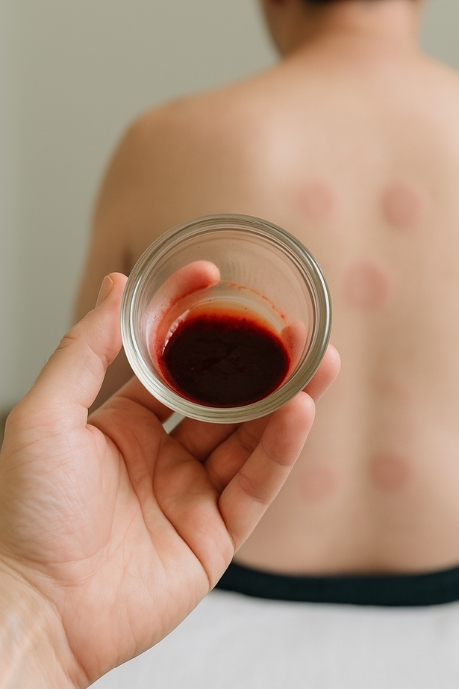
Cupping in Islam: A Sunnah and a Cure
Hijama in Islam is not merely a traditional therapy; it is deeply interwoven with the fabric of Islamic practice, holding a revered status as a Sunnah (the practice, teachings, and sayings of Prophet Muhammad PBUH).
The importance of Hijama in Islam is underscored by numerous authentic Hadith (sayings and actions of the Prophet PBUH), which strongly encourage its practice and highlight its healing properties.
Some key examples of Hijama in Islam, emphasizing the Prophet’s guidance and its spiritual significance, include:
Anas ibn Malik (RA) reported that the Messenger (PBUH) said: “Indeed the best of remedies you have is Hijamah (Cupping).”[Saheeh al-Bukhari (5371)].
Jabir ibn Abdullah (may Allah be pleased with him) reported that the Messenger Sayyidina Muhammad ﷺ (Sallallahu Alayhi Wasallam) said, “Indeed in cupping there is a cure.”[Saheeh Muslim (5706)].
On the night of Israa (his ascension to the heavens), the Messenger Muhammad (PBUH) said he did not pass by an angel except that it said to him, “Oh Muhammad PBUH, order your Ummah (nation) with Hijamah (Hijama Cupping).”[Saheeh Sunan Tirmidhi (3479)].
In a similar narration reported by Abdullah ibn Mas’ud (may Allah be pleased with him), the angels conveyed, “Oh Muhammad, ask your Ummah (nation) with cupping.”This powerfully demonstrates the importance and greatness of this Sunnah.
Abdullah ibn Abbas (may Allah be pleased with him) reported that the Messenger Sayyidina Muhammad ﷺ (Sallallahu Alayhi Wasallam) said, “Healing is in three things: in the incision of the cupper, in drinking honey, and in cauterizing with fire, but I forbid my Ummah (nation) from cauterization (branding with fire).”[Saheeh al-Bukhari (5681), Saheeh Sunan ibn Majah (3491)].
Specific Prophetic Practices and Points for Hijama
Beyond general encouragement, the Prophet Muhammad ﷺ (Sallallahu Alayhi Wasallam) also provided guidance on specific applications and points for Hijama therapy, demonstrating its practical use for various ailments:

For Headaches: Salma (may Allah be pleased with him), the servant of the Messenger of Allah Sayyidina Muhammad ﷺ (Sallallahu Alayhi Wasallam) said, “Whenever someone would complain of a headache to the Messenger of Allah Sayyidina Muhammad ﷺ (Sallallahu Alayhi Wasallam), he Sayyidina Muhammad ﷺ (Sallallahu Alayhi Wasallam) would advise them to perform cupping.” [Saheeh Sunan Abi Dawud (3858)].
Recommended Days : Anas ibn Malik (may Allah be pleased with him) reported that the Messenger Sayyidina Muhammad ﷺ (Sallallahu Alayhi Wasallam) said, “Whoever wants to perform cupping then let him look for 17th, 19th, and 21st…” [Saheeh Sunan Ibn Majah (3486)].
Cupping While Fasting: Abdullah ibn Abbas (may Allah be pleased with him) reported that the Messenger Sayyidina Muhammad ﷺ (Sallallahu Alayhi Wasallam) was cupped (Hijama therapy) while he was fasting. [Saheeh al-Bukhari (5694)].
Cupping on the Head: Abdullah ibn Abbas (may Allah be pleased with him) reported that the Messenger Sayyidina Muhammad ﷺ (Sallallahu Alayhi Wasallam) was cupped on his head. [Saheeh al-Bukhari (5699)].
Abdullah ibn ‘Umar (may Allah be pleased with him) also reported that the Messenger Sayyidina Muhammad ﷺ (Sallallahu Alayhi Wasallam) used to cup his blessed head and would call it (the place at the top of the head) “Umm Mugheeth.” [Saheehah (753), Saheeh al-Jaami’ (4804)].
Cupping on the Neck: Anas ibn Malik (may Allah be pleased with him) reported that the Messenger Sayyidina Muhammad ﷺ (Sallallahu Alayhi Wasallam) was treated with cupping three times on the two blessed veins at the side of the blessed neck and the base of the blessed neck. [Saheeh Sunan Abi Dawud (3860), Ibn Majah (3483)].
Cupping on the Hip: Jabir ibn Abdullah (may Allah be pleased with him) reported that the Messenger Sayyidina Muhammad ﷺ (Sallallahu Alayhi Wasallam) was treated with cupping on his blessed hip. [Saheeh Sunan Abi Dawud (3863)].
Cupping on the Foot: Anas ibn Malik (may Allah be pleased with him) reported that the Messenger Sayyidina Muhammad ﷺ (Sallallahu Alayhi Wasallam) was treated with cupping when he was in Ihram, on the top of his blessed foot. [Saheeh Sunan Abi Dawud (1836)].
These narrations underscore the Prophet’s direct engagement with and specific recommendations for Hijama, solidifying its role as a practical and divinely endorsed method of healing within Islam.
Physical Health Benefits of Cupping Body Treatment:
Pain Relief: Highly effective for chronic conditions like back pain, neck pain, joint pain, headaches, and migraines. It helps release muscle tension and improve blood flow to affected areas.
Improved Blood Circulation: By increasing the flow of blood and plasma through the veins and arteries, cupping enhances the cleansing and removal of toxins and stimulates new blood formation.
This improved circulation can lead to pain reduction and overall better bodily function.
Detoxification: Traditionally viewed as a powerful method for removing stagnant blood and toxins, Cupping and hijama Therapy has a dramatic detoxifying effect on the skin and circulatory system.
This detoxification may not be immediately observable after just one treatment, but after about three to five treatments, there may be a noticeable improvement in the color of one’s complexion.
Reduced Inflammation: By stimulating a localized immune response and improving circulation, Hijama may help in reducing inflammatory processes throughout the body.
Muscle Relaxation and Flexibility: Helps in loosening tight muscles, increasing range of motion, and reducing stiffness, particularly after physical exertion.
Boosted Immune System: Some practitioners believe it stimulates the immune system by drawing out pathogens and promoting a healthier internal environment.
Digestive Issues: Can be applied to abdominal areas to alleviate symptoms of conditions like Irritable Bowel Syndrome (IBS), indigestion, and constipation.
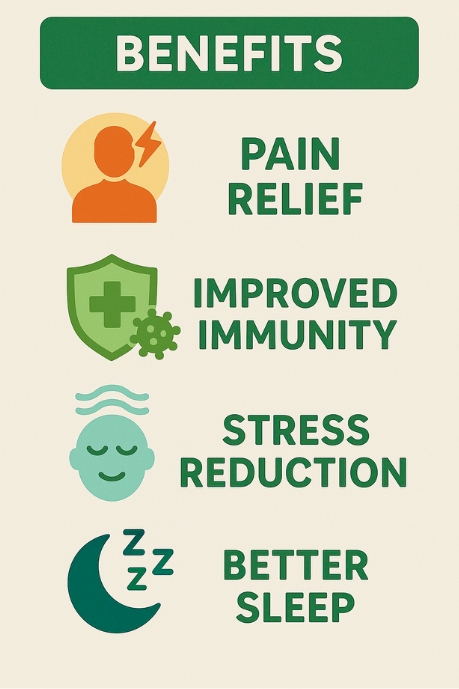
Skin Conditions: May assist in managing conditions like acne and eczema by improving circulation and aiding detoxification, though wet cupping should generally not be done directly on open lesions.
Respiratory Conditions: Dry cupping on the back can help alleviate symptoms of asthma, bronchitis, and common colds by clearing congestion and promoting lung function.
Fertility Issues: As a complementary therapy, some believe Hijama can support reproductive health by improving blood flow to the pelvic region and balancing hormones.
Management of Certain Chronic Diseases: When used as a complementary therapy alongside conventional treatment, it may help manage symptoms of conditions like hypertension, diabetes, and certain autoimmune disorders.
Traditional Insights on Specific Cupping Points (from Ibn al-Qayyim):
The renowned Islamic scholar Ibn al-Qayyim (may Allah have mercy on him) detailed specific benefits of hijama in islam and associated with particular cupping points in his work, “Zaad al-Ma’ad,” 4/58:
Cupping under the chin is beneficial for pain in the teeth, face, and throat if it is done at its proper time. It purifies the head and the jaws.
Cupping on the top of the foot serves as a substitution for the puncturing of the Saphena, which is a large vein in the heel.
It is beneficial for treating ulcers that occur on the thighs and calves, the interruption of menses, and skin irritation on the testicles.
Cupping at the bottom of the chest is beneficial for the treatment of sores, scabies, and mange on the thighs. It helps against gout, hemorrhoids, elephantiasis, and itchiness on the back.
Mental and Emotional Well-being:
Stress Reduction: The relaxing effect of the suction and the overall therapeutic experience can significantly reduce stress and anxiety.
Improved Sleep Quality: By promoting relaxation and reducing pain, Hijama can contribute to better sleep patterns and combat insomnia.
Sense of Well-being and Relaxation: Many recipients report feeling refreshed, energized, and generally more relaxed after a Hijama session.
Spiritual Benefits of cupping in islam:
Following the Sunnah by Performing Hijama sunnah as an act brings blessings and spiritual rewards from Allah.
Seeking Cure through Prophetic Medicine: Believing in and utilizing a form of medicine like Hijama in Islam, recommended by the Prophet (PBUH), is an act of faith and reliance on divine guidance.
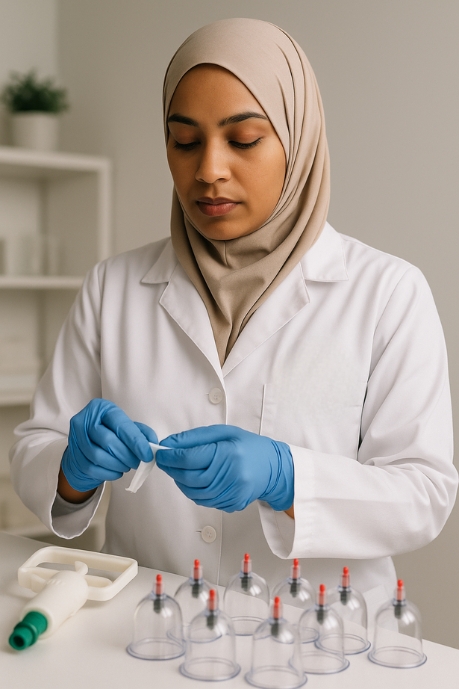
The Hijama Procedure: What to Expect
Understanding the process of Hijama can help ease any apprehension and prepare you for a safe and beneficial session.
Pre-Hijama Preparation:
Consultation with a Qualified Practitioner: This is the most crucial step. A thorough consultation will assess your health condition, medical history, and determine if Hijama is suitable for you.
Hydration: Have liquids tea or juices before your appointment. Avoid heavy meals.
Disclosing Medical History: Be transparent about any pre-existing medical conditions, medications you are taking, or if you are pregnant.
During the Session:
Sterilization and Hygiene Protocols: For your safety, the practitioner should rigorously adhere to strict hygiene and sterilization protocols, especially for wet cupping. This includes using single-use, disposable cups and sterile blades/lancets.
Placement of Cups: The practitioner will identify specific points on your body based on your symptoms or the Sunnah points. Cups are typically placed on the back, shoulders, or legs.
Creation of Suction: For dry cupping, the practitioner will create suction by using a pump or a flame to remove air from the cup.
You will feel a strong pulling sensation on your skin as the cup draws it upwards. This is generally not painful but can be slightly uncomfortable.
For Wet Cupping: After the initial dry cupping for a few minutes, the practitioner will carefully and superficially make very small scratches or pricks on the skin within the suctioned area.
These are shallow and designed to gently draw out a small amount of blood. The cups are then re-applied to draw out the stagnant blood.
Duration of Cupping: Cups typically remain on the skin for 5 to 10 minutes, depending on the type of cupping and the individual’s tolerance.
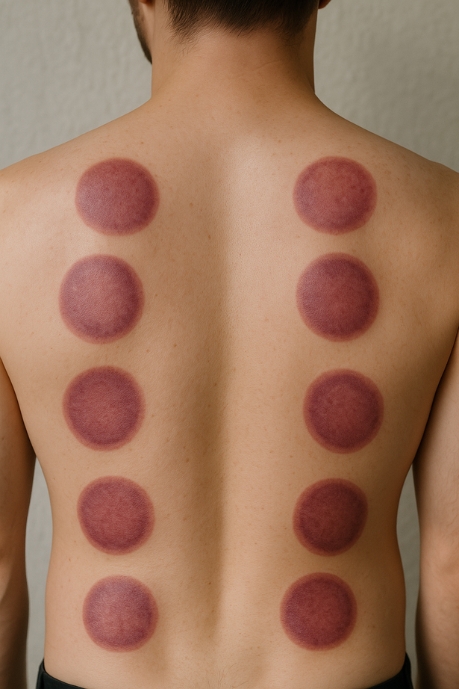
Post-Hijama Care:
Aftercare Instructions: Your practitioner will provide specific aftercare instructions. Generally, this includes keeping the treated area clean and dry for at least 24 hours, avoiding cold showers or excessive sweating, and protecting the area from direct sun exposure.
Dietary Recommendations: Light, nourishing foods are often recommended after Hijama to support the body’s recovery.
Potential Marks and Bruising: It is normal to have circular marks or bruising on the skin where the cups were placed. These vary in color from red to dark purple, indicating the level of stagnation. These marks are temporary and usually fade within a few days to a week.
Hydration: Continue to drink plenty of water to aid the body’s natural healing and detoxification processes.
Safety, Precautions, and When to Avoid Hijama
While Hijama therapy is generally safe when performed correctly, understanding its contraindications and safety measures is paramount for patient well-being.
Choosing a Qualified Practitioner:
The paramount importance of selecting a qualified, certified, and experienced Hijama practitioner cannot be overstated. Look for someone who:
Possesses Certification: Has undergone formal training and is certified by a reputable Hijama or cupping therapy organization.
Maintains Strict Hygiene: Operates in a clean, sterile environment, and uses only single-use, disposable equipment (cups, blades, gloves).
Has Experience: Experience ensures they understand the nuances of the therapy and can manage different client needs.
Conducts Thorough Consultations: A good practitioner will always perform a detailed health assessment before the session.
Contraindications (When Hijama May Not Be Suitable):
Pregnancy: cupping is generally avoided, especially for the women who are pregnant.
Potential Side Effects (Generally Mild):
Most side effects of Hijama are mild and temporary:
Bruising and Temporary Discoloration: This is the most common side effect and typically fades within a few days to a week.
Mild Discomfort: You might feel a slight pulling or stinging sensation during the procedure or mild soreness afterward.
Dizziness or Lightheadedness: Rare, but can occur, especially if you are prone to low blood pressure or haven’t eaten adequately.
Infection: This is preventable with proper hygiene. If non-sterile equipment is used, the risk of infection significantly increases.
Common Misconceptions and FAQs about Hijama
Like many traditional therapies, Hijama is often surrounded by myths and questions. Here, we address some of the most common ones.
Addressing Myths and Frequently Asked Questions (FAQs):
Is Hijama painful?
Truth: While you will feel a strong suction and pulling sensation, it's generally described as mild discomfort, not severe pain.
For wet cupping, the incisions are superficial and typically feel like a slight scratch or prick, not a deep cut.
Is the blood 'bad' blood?
Truth: From a traditional perspective, the blood drawn in wet cupping is considered "stagnant" or "diseased" due to its accumulation of metabolic waste and toxins.
Modern science suggests it's deoxygenated blood and interstitial fluid that has stagnated in capillaries, contributing to localized inflammation.
It's not necessarily "bad" in the sense of being infected, but rather "stagnant" or "congested."
Can anyone perform Hijama?
Truth: Absolutely not. Hijama, especially wet cupping, requires specialized training, knowledge of anatomy, strict hygiene protocols, and an understanding of contraindications. It should only be performed by a certified and experienced professional.
Is it only for Muslims?
Truth: While Hijama in Islam holds significant religious importance as a Sunnah, advantages of hijama therapy for health are universal. Many non-Muslims around the world practice and benefit from cupping therapy, as it is a widely recognized traditional healing modality.
How often should one do Hijama?
The frequency depends on the individual's condition and the Therapist's recommendation. For general well-being and Sunnah practice, some do it monthly or twice a month. For specific ailments, it might be more frequent initially, then spaced out.
What do the cupping marks mean?
The circular cupping marks (ecchymosis) indicate the degree of suction and localized blood stagnation. Darker marks often suggest more stagnation or toxicity in that area. They are temporary and typically fade within 3-7 days.
Can pregnant women do Hijama?
Hijama cupping is avoided for pregnant women, because it leads to miscarriages.

Conclusion
Hijama, or cupping therapy, beautifully blends ancient wisdom with natural healing, deeply rooted in Islamic tradition.
This cherished Sunnah Hijama practice offers numerous benefits of Cupping in Islam and significant advantages of Hijama therapy.
Indeed, Hijama is Sunnah, central to Hijama Islam, even providing guidance on optimal hijama days sunnah or sunnah days for Hijama.
When seeking this blessed cupping therapy Sunnah, consulting a qualified hijama specialist offering sunnah cupping therapy for male & female ensures safe and effective cupping body treatment.
This ancient practice of hijama in Islam remains a valuable complement to your holistic health regimen.
Sources -
Hijama Hadith's (Sahih al-Bukhari, Sahih Muslim, Sunan al-Tirmidhi, Sunan Ibn Majah, Sunan Abi Dawud): Sunnah com
Ibn al-Qayyim (Zaad al-Ma’ad): on Prophetic medicine
Historical Context of Hijama in Islamic Medicine: Muslim Heritage
Benefits of Carrying the Sunnah: Shaykh.ai

No Comments